[divider]A Beautiful Spider[/divider]
When Peter and Uncle Ben try to fix a leak in the basement, a banal incident occurs which will change the shape of the adolescent’s life. Peter stumbles upon a leather briefcase that used to belong to his father. Memories flood in, taking Peter back to the night when he was separated from his father. This is when The Briefcase starts, dominated by the omnipresent piano motif which receives its first variation here. Surprisingly, the echo of Playing A game of Go (A Beautiful Mind) becomes relevant in the context of Peter’s portrayal as an introverted adolescent who has to go up against Flash Thompson, a rude fellow student. Peter, isolated and unsure about his identity, resembles A Beautiful Mind’s John Nash in that both are imbued by scientific genius, both have social issues and both have a mystery to unveil. In Ron Howard’s film, the protagonist stubbornly chases a formula set to reveal "the dynamics of the universe", whereas Peter tries to find out why their parents went missing.
As Peter finds glasses in the briefcase and puts them on, he is reminded of his father’s last words. The scene is scored gently with the emotional theme (at 1’14) echoing the end of Young Peter. Much to Peter’s surprise, a fold in the briefcase reveals the mysterious "regression rate algorhythm". Dense strings play the first notes of the emotional theme, in a performance so somber that the line is rendered almost unrecognizable, as if in spite of their affection, or maybe because of it, Peter’s parents were hiding a dark secret. The young man’s curiosity is interrupted by uncle Ben’s knocking on the bedroom door.
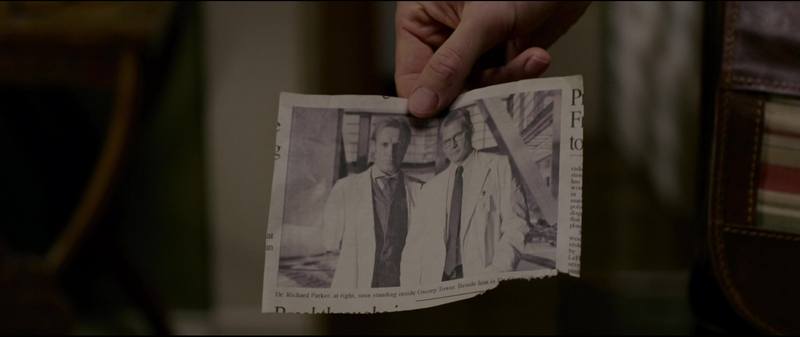
Pointing to the pictures in the briefcase, Ben mentions the name Curtis Connors, a leading reptile specialist and former colleague of his brother’s. On his way out, Ben makes a quip about Gwen’s picture on Peter’s desktop, allowing James Horner to insert a short and discrete strain of the emotional theme right at the start of Secrets. At twelve seconds into the cue, strings reminiscent of Titanic’s Hard To Starboard (3’25) transition to a new binary ten-note motif played by the flute and the saxophone, rather in the vein of Sneakers and A Beautiful Mind, two scores which also commented on mathematics and computer science. These notes will appear whenever the student searches the Internet or browses a book on his father. Meanwhile, strings and brass build into a majestic variation on the main theme (0’50) worthy of the 108 floors of military, medical and chemical research that make up the Oscorp Tower, where Peter goes in hopes of finding his father’s former colleague.
Peter finds a way into the off-limits labs. The mystery and tension that mark the start of The Spider Room result from a cluster of somber strings performing four-note phrasings, a simplified version of the main theme’s first five notes. This leads to the creepy flute motif from Apollo 13’s Manual Burn, which accompanies Peter entering a lab full of genetically modified arachnids (at 0’42) – it will play again when spiders rain down on the protagonist. The theme is handed to the oboe, with celli in rhythmic counterpoint, before being taken over by the piano motif. The string accompaniment becomes increasingly restless as the pace quickens and Peter moves closer and closer to a maze of webs.
Unreleased music plays as Peter is bitten by a spider, the first effects becoming visible during a Rumble In The Subway, when in a light-hearted turn, Peter’s reflexes spiral out of control: he finds himself dangling from the subway’s roof after his sixth sense warns him of danger, his hands stick to stuff everywhere and so on. James Horner responds with a flurry of electronic effects, all the while drawing on the orchestral palette as well: the clarinet performs the main theme, the tuba supplies irony and the strings present an energetic coda to this most unusual episode.
The second part of Secrets (1’07 to 2’30) plays as Peter returns home and is seen protecting his aunt from a fly, which he grabs mid-air with no more than two fingers. Next up, he raids the fridge, waxing lyrical about food he has always hated. The adults are puzzled but the mood remains bouncy. The music follows suit, a bright piano lullaby laced with synth choir and chimes reminiscent of The Karate Kid’s Jacket On, Jacket Off, itself a story about a young pupil and an old mentor.
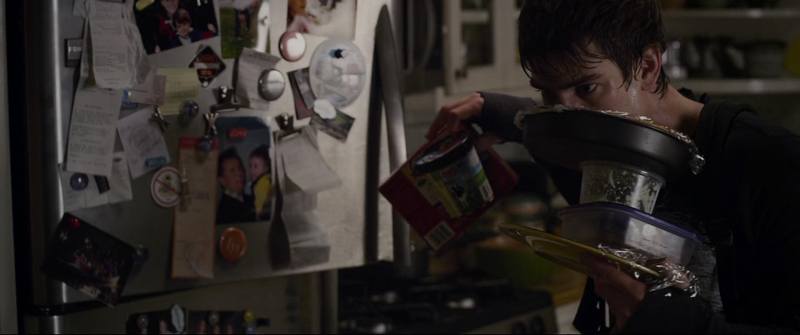
The mood abruptly changes the next morning, when two cold and harsh string glissandi kick off Hunting For Information. A spider in his bedroom reminds Peter of the events in the lab and he realizes the bite has altered his physical abilities. At 0’26, the piano motif re-surfaces and the strings continue their discomforting ballet, a bit like Mr. Dark’s first appearance in Something Wicked This Way Comes, although the 1983 cue had a harp instead of a piano. Is Peter Parker changing into a supernaturally gifted man like Ray Bradbury’s sinister fun fair owner? Toward the end of the cue’s first minute, James Horner nimbly flips the mood: after a short harp accent, he turns to the ten-note motif that opened Secrets. A logical move, since Peter goes back to investigating doctor Curtis Connors, hoping to ask him about the mystery surrounding his parents’ disappearance.
The Equation underscores the first meeting with Connors, who, as it turns out, sheds little light on the matter but seems obsessed by Richard Parker’s "regression rate algorhythm" and the secret it might hold to help him repair his severed arm. In another unreleased cue, the piano motif is orchestrated for two dry guitars and soft strings. The down-to-earth guitar sounds seem to indicate how close Peter is to discovering the truth about his parents and they also reveal the binary nature of the motif, much like the one used in Sneakers to translate mathematics into music.
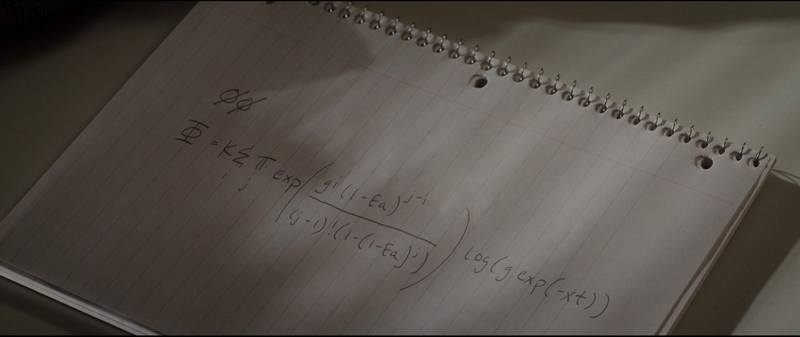
Peter believes and trusts Connors, after which both scientists set out to crack the equation which might enable them to cross-breed species. At 1’27, the mood darkens, tentative strings and oboe commenting on the fatal developments this exercise in genetic modification is bound to engender. As Parker scribbles down his father’s formula, James Horner supplies mysterious synth choir and descending chords much like Apocalypto’s From The Forest and Avatar’s Pure Spirit of the Forest. The revelation will allow Man to lay bare the miracles of nature, the full potential of which will be ruthlessly pursued by Connors, whose hunger for power is insatiable.
Playing Basketball is James Horner’s short but entertaining comment on Peter poking fun at Flash during gym. The cue uses trumpet, strings and a tuba having fun with the main theme. The rhythm and mischievous tone evoke Aaron Copland material that James Horner explored back in the eighties, especially during Natty Gann’s Rustling cue. Regrettably, the cue is too short to allow further development of the melodic and rhythmic material.
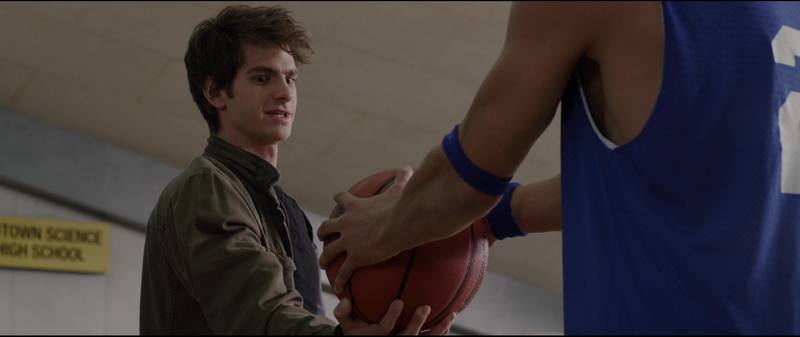
Putting the crown on Peter’s research, The Ganali Device concludes the first part of the score. In Curtis Connors’s lab, a successful attempt is made to test the briefcase formula on a disfigured mouse. Peter’s excitement at fully realizing his father’s secret research inspires James Horner to compose a cue brimming with enthusiasm and wonderment. Starting at 0’31, pianos symbolizing intelligence and genius play as they did in Searching For Bobby Fischer and, obviously, A Beautiful Mind. The piano motif is spirited and bouncy (1’02) and the music climaxes into a proud and expansive statement of the main theme (1’37). The Ganali Device is another ode to the prowess of the human brain. As he settles on a joyous and proud version of the piano motif, James Horner seems to contend that Peter Parker has finally found a way to cope with his parents’ disappearance.
In spite of spirited cues such as Rumble In The Subway, Playing Basketball and the end of Secrets, the album’s first part is firmly centered around the piano motif. In its various guises and colors, it suggests all the mystery of the piece, both the mystery that shrouds scientific invention and the veil that obscures Peter’s true identity. By dedicating a requisite third of the movie to this psychological quagmire, director Marc Webb lays the foundation for Peter Parker’s road to redemption and self-realization. Quite poignantly and meaningfully, the quest for scientific discovery is mirrored by the road to psychological maturity.
The main theme makes a few brief appearances but does not play a prominent part, because Peter has yet to become Spider-Man. The same holds true for the emotional theme, strains of which recall the fading presence of Peter’s parents. However, the melody is still far removed from the love theme it will become for Gwen and Peter. All this will change as emotion is set to take precedence over science and New York will be in dire need of Spider-man as a very menacing reptile lays waste to the proud city.
[divider]Death transforms life[/divider]
The death of uncle Ben marks a turning point on the album and in the movie. After a falling-out, Peter runs out on his uncle, who quickly goes after him. What happens next is Spider-Man mythology: Peter witnesses a hold-up but does not intervene because he thinks it is none of his business. Except of course the criminal goes on to kill uncle Ben, who does try to stop him.
For this harrowing scene, James Horner brings into play aggressive strings, the suffocating effect of which is duplicated by electronic effects. A brief lull merely sets up the fatal blow (0’30).
James Horner supplies a beautiful oboe solo as Peter discovers that the victim of the shoot-out is none other than his uncle. In Black Gold fashion, Dhafer Youssef’s vocal solo highlights the loss and suffering, while the piano reminds us of early nineties scores such as Patriot Games and Thunderheart.
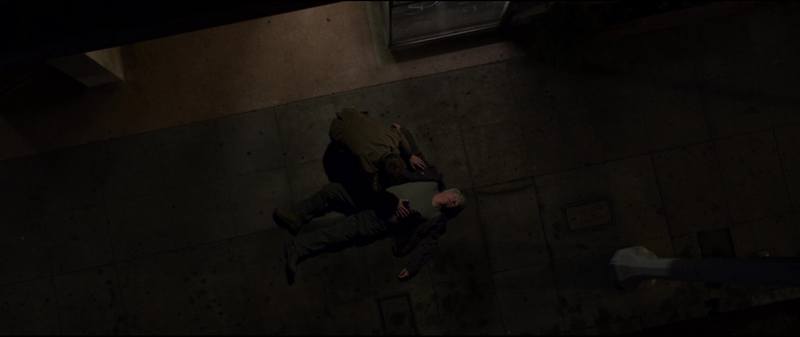
All this leads to the album’s saddest moment. Aunt May’s sorrowful discovery is scored for tentative piano and delicate string writing in the purest Horner tradition. When Peter sees the killer’s mugshot, the penny drops (2’00), at which point grave cello readings join the strings. The piano then leads to the delicate but heartbreaking moment when Gwen locks Peter in a tender embrace. The orchestration echoes The Karate Kid’s most intimate moments, linking Dre and Peter Parker.
The sadness ends at 3’43 when an electronic pulse and dark string writing remind us of how uncertain the future is. Peter’s life is forever changed by the passing of his uncle. From now on, he explores the most unsavory streets of nighttime New York hoping to find his uncle’s murderer – he need only look for a tattooed star on the left wrist. Along the way, he confronts a band of thugs, giving way to a series of battle cries (4’27) followed by an energetic electronic and orchestral ruckus. Racing strings and chopped rhythmic material, worthy of that of Les Tambours du Bronx, a French percussion band, accompany Peter during a rooftop chase. Abruptly, an Apollo 13-like trumpet motif breaks up the musical line when Peter is seen scaling a wall on all fours (4’51). Bouncing electronics imitate the vertical movement, after which another trumpet call signals a new musical onslaught underneath a conspicuous sprinkling of the main theme’s opening notes.
The young acrobat finally shakes off his pursuers but crashes through the roof of a catch arena. When he comes to, he finds himself opposite a large red mask painted in honor of a catch contestant. This is where Peter Parker starts Becoming Spider-Man and James Horner unleashes tonal heaven, with dense orchestrations, electronic embellishment and children’s choir. The strings swell as Peter Parker warms to the idea of a mask and a costume, realizing this will allow him to hide his identity during his nighttime escapades. This is the typical "going to town" cue that is featured in every superhero story: the hero makes himself known (sort of) to the world. The remainder of the cue is made up of a series of vignettes pitting Spider-Man’s budding crime fighting histrionics against Parker’s attempts to create a bobsleigh-based costume and web-like materials which are thin and yet strong enough to carry him along as he bounces from building to building and remains suspended in mid-air. The main theme is given a jubilant treatment every step of the way.
James Horner manages once again to drive the story forward with a series of chimes (0’36 and 3’00), cymbals (1’16 and 3’42), harp glissandi (2’44) or with double cymbal crashes (0’50) straight out of Black Gold’s Wonders of Wealth and which mimic a cup and chopsticks landing in a waste basket. It is Auricle precision and spirited musicality all rolled into one glorious moment.
The heavenly choir comments on a young man’s wondrous concept of web slinging. Once again, the music builds, launched by the pianos that started the vista shot of the Chinese Wall in 2010’s Karate Kid (From Master To Student To Master) or the gliding part of Write Your Soul, which James Horner composed for a trio of P-51 aerial acrobatics pilots with whom he occasionally flies. Understandably, this orchestral crescendo, which builds into an explosive statement of the main theme (1'30), accompanies our hero walking a tightrope and testing his equipment. James Horner pauses the music at 1’50 when Parker falls down twenty-something floors before saving himself in the very nick of time.

The second part of the cue (starting at 2’00) underscores the reputation the webslinger makes for himself after daytime interventions against the same kind of criminals who got uncle Ben killed. New York is wowed and the puzzled police try to identify the vigilante, while the piano (at 2’50) brings back happy memories of James Horner’s seemingly effortless scores for such police thrillers as The Pelican Brief and Flightplan. An electronic melody underscores Peter Parker’s rising star, while his high-school friends discuss an Internet video of Spider-Man’s antics. With his costume all finished, Spider-Man is now ready to make his first camera appearance and soar above the city’s skyscrapers, moving along the beats of a trumpet crescendo that Horner also used right at the end of Write Your Soul and for a similar moment in Spiderwick’s The Flight Of The Griffin. Triumphant choir wraps up the suite-like cue and leaves the superhero overlooking New York, his future hunting grounds. Peter Parker’s new life has just started.
When Spidey collars another thief, he runs into a hostile NYPD force and has to flee the scene. This leads to a chase sequence covered by the second part of Metamorphosis (1’49 to 3’04), which puts forward aggressive trombones, agitated strings echoing Cocoon’s The Chase and Deep Impact’s The Comet Sunrise. The action climaxes into a splendid statement of the main theme (at 2’33) as the webslinger leaves the police and the dense traffic behind him in a stunning display of aerial acrobatics.
Continued on page 3



